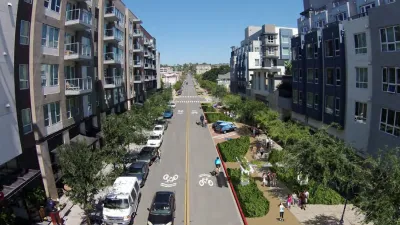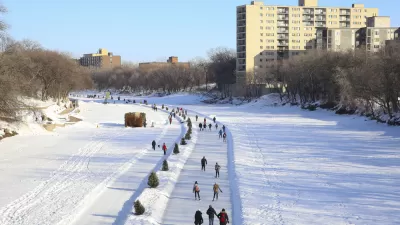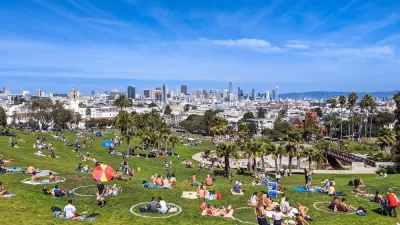The second most populous city in California, San Diego, wants to revolutionize its approach to planning parks and open space.

"The city of San Diego is on the precipice of replacing a decades-old way of thinking about its parks, emphasizing quality over quantity in a new planning approach that could have profound effects on disadvantaged neighborhoods and older ones already built to capacity," reports Jennifer Van Grove.
The evolution of parks planning in San Diego is encapsulated in a draft version of the city's new Parks Master Plan, released in April. The previous park plan for the city dates back to 1956.
Among the foundational changes proposed by the draft Parks Master Plan is a points system for quantifying the access of residents to quality parks. Today, the city’s parks standard is 2.8 acres for every 1,000 people. "Going forward, the standard will be 12 points for every 1,000 residents, with points representing the recreational value of the park’s size, features, connection to transit or programming," according to Van Grove.
The city will seek input on the draft from the public until the end of May.
FULL STORY: San Diego shakes up citywide approach to parks with focus on access, amenities

Trump Administration Could Effectively End Housing Voucher Program
Federal officials are eyeing major cuts to the Section 8 program that helps millions of low-income households pay rent.

Planetizen Federal Action Tracker
A weekly monitor of how Trump’s orders and actions are impacting planners and planning in America.

Ken Jennings Launches Transit Web Series
The Jeopardy champ wants you to ride public transit.

Washington Legislature Passes Rent Increase Cap
A bill that caps rent increases at 7 percent plus inflation is headed to the governor’s desk.

From Planning to Action: How LA County Is Rethinking Climate Resilience
Chief Sustainability Officer Rita Kampalath outlines the County’s shift from planning to implementation in its climate resilience efforts, emphasizing cross-departmental coordination, updated recovery strategies, and the need for flexible funding.

New Mexico Aging Department Commits to Helping Seniors Age ‘In Place’ and ‘Autonomously’ in New Draft Plan
As New Mexico’s population of seniors continues to grow, the state’s aging department is proposing expanded initiatives to help seniors maintain their autonomy while also supporting family caregivers.
Urban Design for Planners 1: Software Tools
This six-course series explores essential urban design concepts using open source software and equips planners with the tools they need to participate fully in the urban design process.
Planning for Universal Design
Learn the tools for implementing Universal Design in planning regulations.
Heyer Gruel & Associates PA
Ada County Highway District
Institute for Housing and Urban Development Studies (IHS)
City of Grandview
Harvard GSD Executive Education
Toledo-Lucas County Plan Commissions
Salt Lake City
NYU Wagner Graduate School of Public Service





























